Hi everyone!! Some of you may remember that back in October I had shared a Q&A with one of my biggest inspirations, Erin Ireland! Erin has always been (and still is!!) someone I look up to for advice and inspo when it comes to living a plant-based / vegan lifestyle. I asked Erin all SORTS of questions from what inspired her to make the switch to a vegan lifestyle to dishing on what her biggest hurdles have been and many more questions in between.
Well, needless to say, many of YOU were so intrigued by her journey and asked so many questions that we decided to share a follow-up Q&A with Erin. All 12 of the questions below were asked by YOU and I’m so excited to share Erin’s eye opening answers to each and every one of them today.
So, without further adieu, let’s get this party started!! And, as always, if you have additional questions, please feel free to share them in the comments section below and maybe we will have another to do ANOTHER Q&A?!
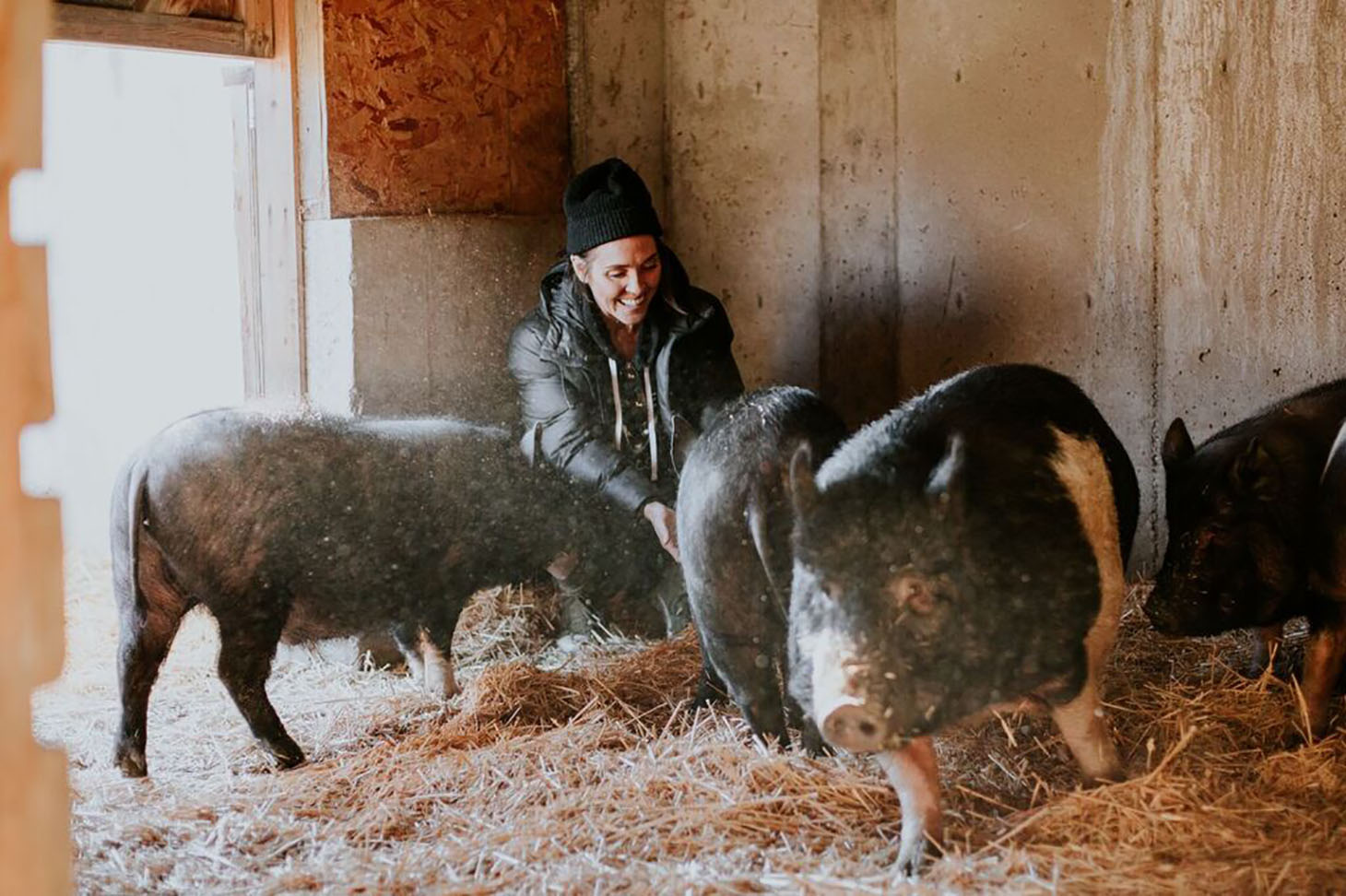
1. How do you go about introducing a picky eater to a vegan diet? I always try to make my boyfriend new vegan dishes to reduce our animal consumption (and he tries them every time!) but because he’s quite a picky eater, he doesn’t end up loving the food.
A great first step to opening your non-vegan, picky-eater BF up to some plant-based eating is to cook him dishes he recognizes. Don’t get all healthy on him at first! He needs to see that vegan cooking can be just as delicious as what he is used to. No one wants to make flavour sacrifices … and good news, you definitely don’t have to.
A few “comfort food” dishes that have been big hits with my non-vegan friends include this amazing Korean Vegan Beef dish (try the more indulgent, lentil-free version to start). If you don’t tell him it’s vegan, he may not even guess! Gardein brand is my favourite, but it’s all about the sauce. Another fav dish is this Vegetarian Lasagne (simplify it by using store-bought tomato sauce) which is one of the most widely recreated recipes I’ve ever shared online (by vegans and non-vegans alike). It’s so hearty!
Lastly, a couple of tips from my husband!
- He loves having frozen options that he can cook up when desperate/starving. His go-to is Gardein’s chicken scallopini. He puts the “breasts” in sandwiches or just eats them on their own. Pair them with some creamy Earth Island honey mustard dip or blue cheese sauce and there’s truly no way he can’t love them!
- If your boyfriend’s into sports, google the “sport he loves most” + “vegan”. If he’s into football tell him Tom Brady eats mostly vegan and Cam Newtown just converted. If he’s a basketball lover show him the Nike commercial Kyrie Irving made. If he’s into hockey, show him this article on Zdeno Chara going plant-based. There are endless plant-based athlete role models to draw inspiration from!
2. Are you worried about high soy intake running the risk of affecting the estrogen-receptor as a woman?
I’m glad you asked about soy because there are so many misconceptions about this harmless little bean, which is packed full of so many nutrients. Even in a lightly processed state (tofu), it’s still highly nutritious. It would be sad to miss out on its positive health effects because of the inaccurate information floating around out there.
Here are some soy-related stats shared by one of my favourite vegan medical doctors, Michelle McMacken (@veg_md on Instagram). She’s constantly sharing great info!
Women’s Health
- Soy contains isoflavones, a type of phytoestrogen that is 1000 times weaker than human estrogen and does not behave exactly like human estrogen in our bodies.
- Isoflavones block some of estrogen’s effects and mimic others, generally resulting in health benefits.
- Soy has been shown to prevent breast cancer in the amounts consumed in Asia.
- A 2008 review showed that women averaging one cup of soy milk or ½ cup of tofu per day had a 30% lower risk of developing breast cancer versus women who avoid soy.
- Soy has also been shown in many studies to reduce the risk of recurrence in breast cancer survivors.
- Soy reduces the risk of endometrial cancer and can reduce menopausal hot flashes.
- Soy has the highest protein and fat content of any legume and is high in iron and fiber.
Men’s Health
- A large 2010 systematic review showed that soy does not affect testosterone levels, sperm concentration or sperm quality.
- Soy may lower the risk of prostate cancer by up to 50%.
Cardiovascular Risk
- Soy lowers blood pressure and LDL cholesterol. Dr. McMacken also shared that most dietary estrogen comes from dairy and meat products. Unlike soy phytoestrogens, animal estrogens DO mimic human estrogen in our bodies. Similarly, most GMO soy is used to feed chickens, pigs, and cattle, which are then consumed by people. Much of the soy grown for human consumption is non-GMO.
3. My son is so very picky…and maybe that’s my fault. But how would you go about transitioning someone who already barely eats the ‘not so good stuff’ to vegan?! OH!! And what’s your BEST alternative to scramble eggs/recipe?!
You’re not alone! So many kids are picky. My vegan daughter, Roen, goes through serious picky phases where it seems she’s eating nothing but buttered toast. First of all, know that a transition phase where the taste buds are adjusting is normal. If someone is used to foods with a higher sugar, fat and salt content, it can take a while for the healthier foods (like fruit or a non- sugary breakfast cereal like oatmeal) to begin tasting good.
Sidenote: If you do need some “junk food” to help with the transition, know that every non-vegan junk food, like hot dogs, mac and cheese and sugary cereals are available in a vegan format at most grocery stores these days.
I think a great first step to transitioning your child to a vegan diet is to substitute in plant-based versions of your main grocery staples, like milk, cheese, and yogurt. In terms of our favourite brands, try the new Daiya shredded cheese (the “cutting board shreds”, sold at most grocery stores). We also love Chao and Follow Your Heart and VioLife but these are a bit harder to come by. Roen’s favourite vegan yogurt is the unsweetened coconut-based variety from Yoso. And for milk, we’re constantly switching it up between soy, coconut, almond, and cashew – we’re not loyal to one brand either. They’re all pretty similar.
Another thing to keep in mind is that kids’ food should taste good – we can’t expect them to eat plain steamed broccoli (even though that would be so nice, wouldn’t it?!). I add vegan butter (usually Earth Balance) a tiny pinch of sea salt and a splash of apple cider vinegar – she gobbles it up! I also like blending leafy green veggies into smoothies and pasta sauces – she never knows it’s there. I truly hope this helps as I know how frustrating this can be!
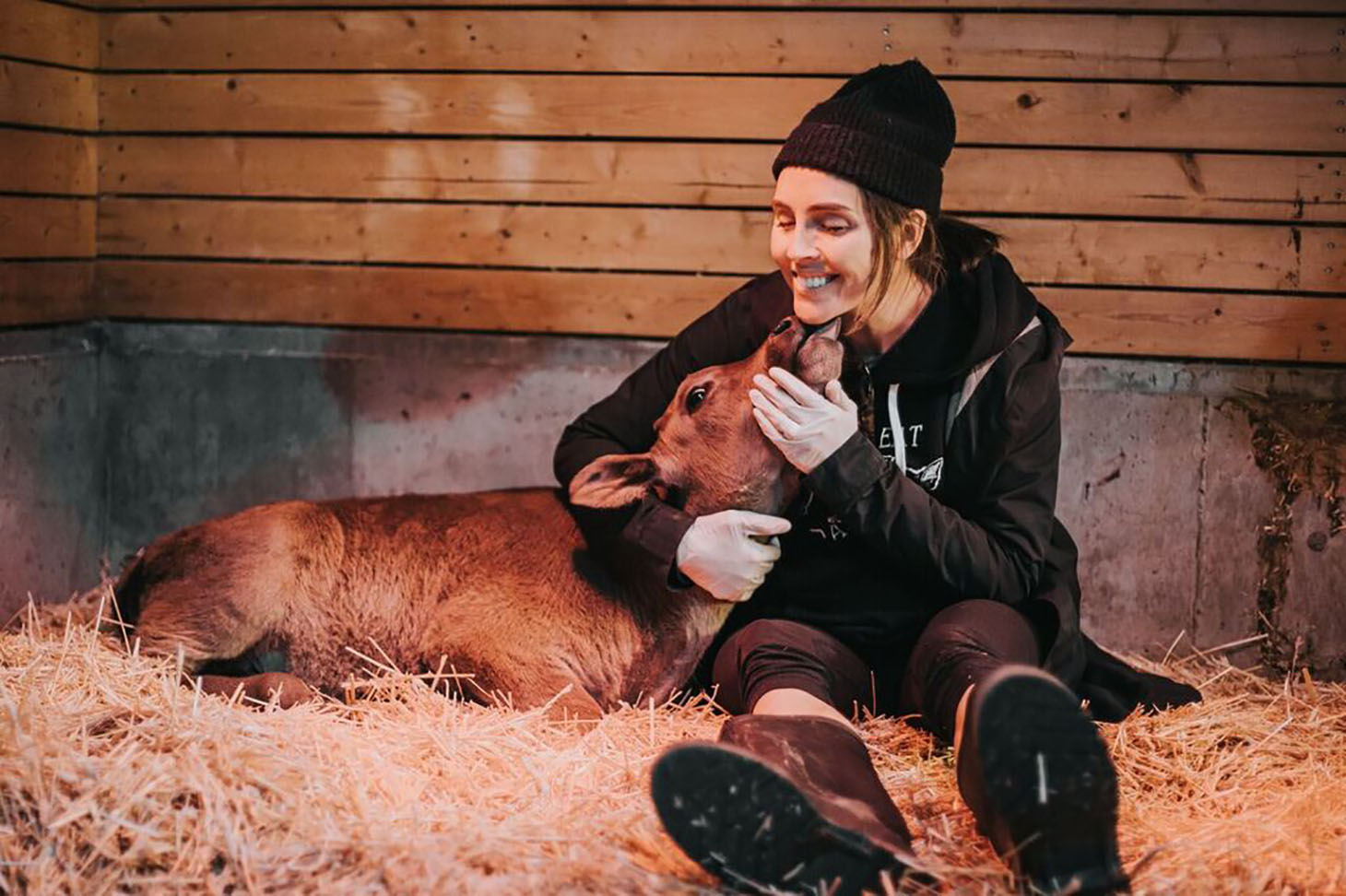
4. One of the challenges I have is being on a student budget … would you say that vegan options are more/less expensive? Also, any helpful tips for meal prepping or places to eat out to cater to a busy lifestyle?
I remember living off $100 a month as a student in my university days – I feel you! But good news … going vegan totally slashed my grocery bill. Meat and seafood were always the largest items on my grocery bills. Some of the most common, nutritious plant-based staples are inexpensive, which is why many poorer countries eat primarily plant-based. A few pantry mainstays include oats, beans, rice, lentils, yams, pasta, potatoes, frozen veggies, canned veggies (being vegan doesn’t mean buying organic 100% of the time from the farmers market).
A few other ways to consider saving money grocery shopping: invest in a Costco membership, buy in bulk, buy generic over brand name, if you’re into organic but can’t always afford it, stick to buying “the dirty dozen” organic (produce with the most pesticide residue) and the rest conventional.
As for meal prep, I love roasting off huge trays of vegetables that will last for days. Big pots of lentils or rice also last for up to five days in the fridge. Having these on hand makes it easy to quickly throw together bowls with rice and lentils as the base, topped by vegetables. Top with a big dollop of hummus and you are set! For recipes, just plunk what you want to make into Google or Pinterest along with ‘vegan’ and thousands of options will pop-up! My favourite recipe blogs are minimalistbaker.com, hotforfoodblog.com.
5. I’m not sure what you mean about dairy products being full of hormones and cancer-causing hormones? This is by no means true and I would love to see the information behind this.
All milk, from humans or animals, is hormonally active by design because its purpose is to help babies grow. Cow milk is especially potent, helping calves gain about 80 lbs per month. Cow milk naturally contains the growth hormones insulin-like growth factor 1 (IGF-1) and bovine somatropin (BST), as well as pregnancy hormones estrogen and progesterone. In fact, Ad Standards recently forced the Dairy Farmers of Canada to remove misleading ads that stated milk has zero growth hormones because this statement is false.
As for milk and its link to cancer, don’t take my word for it. Here are some quotes from internationally renowned physicians:
“Regular consumption of dairy products has been linked to prostate cancer. Dairy is also associated with increased risk of lung cancer, breast cancer, and ovarian cancer in people with lactose intolerance,” – Dr. Neal Barnard, Physicians Committee For Responsible Medicine
“In the population study “Milk Intake and Risk of Mortality and Fractures in Women and Men,” researchers following more than 100,000 men and women in Sweden for about 20 years found significantly higher rates of bone and hip fractures, heart disease, cancer, and premature death in general for women who drank more milk. When it comes to cancer, leading experts have expressed concern that the hormones in dairy and other growth factors could potentially stimulate the growth of hormone-sensitive tumors,” – Dr. Michael Greger, nutritionfacts.org
“Early puberty is not the only concern in consuming milk from a pregnant cow. Get your mammograms, ladies. Why do American women get so many breast lumps, necessitating all these x-rays, biopsies and surgery? The breast is a hormone responsive organ. Could stimulating it day after day with potent bovine estrogens along with IGF-1, the most potent growth promoting hormone in the body, be contributing to the epidemic of breast lumps that American women search for in most every shower they take? It is well known that when dairy- consuming women do get breast cancer, it is more aggressive and lethal, thanks to the hormones and growth factors destined for baby calves but hijacked by humans with dreadful results,” – Dr. Klaper, doctorklaper.com
A book I enjoyed that dives deep into this topic is The China Study by T. Colin Campbell – highly recommend!
Personally, I choose to avoid dairy because I can’t handle the thought of newborns being separated from their mothers within twenty-four hours after birth. This is what happens on small and large dairy farms, otherwise, the babies would drink the milk which dairy companies sell to grocery stores. If the calf is a boy, he is considered a waste product and is sent to the slaughterhouse to be sold as veal. The girls become dairy calves and spend their entire lives being repeatedly artificially inseminated, enduring nine-month pregnancies, giving birth over and over again and having their babies taken away until their bodies are spent. Their reward for everything they’ve endured is a trip to the slaughterhouse to be killed for cheap meat. I can’t, in good conscience, fund these standard industry practices by buying dairy products. Plus, there are just so many delicious dairy-free options out there these days! Going dairy-free is literally a win-win-win for health, the animals and the planet.
6. Do you feed your dog vegan? Most dogs require a raw diet with meat as the first ingredient.
I used to believe this, too. It turns out that dogs are actually “scavengers”, not obligate carnivores. On the streets, stray dogs survive off whatever they can find. They don’t necessarily eat a meat-forward diet. I learned this after speaking to five vets who didn’t blink an eye when I asked if they foresaw any red flags with Effie going vegan. In fact, most vets sell vegan dog food directly from their clinics. Here’s a post I wrote about what I learned from three vets about dogs going vegan, if you’d like to read more about our experience.
Effie ate Petcurean Gather kibble for over a year. I think it’s the most widely available vegan dog food on the market (sold at most of the big stores). Recently, Effie switched over to a mix of wet and dry food from a brand called Vecado whose label is Evolution (found it at Vegan Supply in Chinatown here in Vancouver). Homemade food would be ideal, but Effie is strangely picky and won’t touch anything I make. Other vegan brands to consider are Virchew, Halo and Natural Balance.
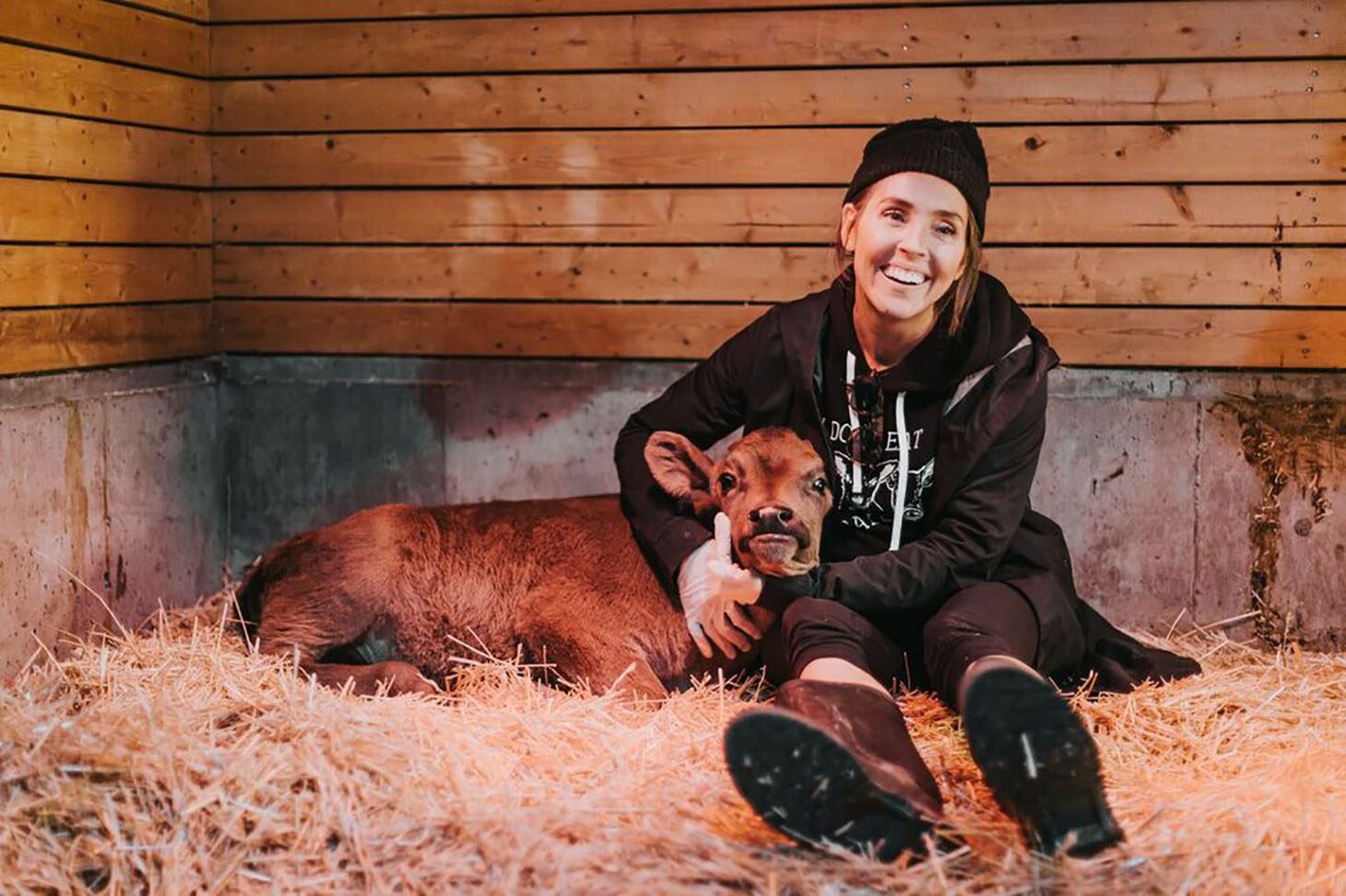
7. What if you could raise your own chickens, in your own yard in a coop, let them have their run of a fenced in area, and keep them happily until they die naturally. Would it then be ok to eat their eggs? I.e. not for sale or a profit, just for your own consumption, as and when the chickens lay eggs. Just wondering if this would be acceptable animal welfare. This article makes me want to give up eating eggs but wondering if there is an alternative way to raise them happily. Please no judgment, just an honest question.
Fair question! It depends on where the chickens come from. Typically, they’re from hatcheries, where chickens are bred to have “desirable traits” (lay an unnaturally high quantity of eggs) despite the negative effects this inbreeding can have on their health. It’s also common practice for sick chickens to be tossed aside and left to die. Male chicks, a waste product of the industry since they don’t lay eggs, are ground up in a macerator or suffocated to death within a day after they’re born. If your chickens come from a rescue organization and you give them “first dibs” on their eggs (they sometimes like to eat their eggs for nutrients), then I can’t see any harm in eating some of their eggs every now and then.
Personally, I believe that animals are here with us, not for us, which is why I would choose to avoid their eggs. Also, after learning that a chicken egg is a menstruation, I totally lost a taste for them. Lastly, the amount of cholesterol in one egg is equivalent to that in an eight-ounce steak and the USDA has declared that eggs cannot legally be labeled as “healthy’ or ‘nutritious”. I’d rather go for a nutritious, egg-like
substitute like tofu scramble or chickpea egg/omelette. If you’re in the States, you must try the new egg scramble from Just. It looks, tastes and smells a lot like chicken egg scramble.
8. How do you get B12? Is this an issue?
As a vegan, getting enough B12 is definitely not an issue. I just take a squirt of liquid B12 or a pill whenever I think of it. My levels have never been low. I’m not loyal to one brand, but right now I’m using Garden of Life B12 spray.
If we didn’t live in such a sterilized world and our produce wasn’t washed in chlorinated water, we could all get B12 naturally, from the earth, just like the animals do (and how humans used to hundreds of years ago). B12 is found in soil, so if you produce shop at the farmers market where traces of soil remain on your veg, you’re most likely getting some naturally. But just like most people take a multi-vitamin, it’s best to take a B12 supplement to be safe. Plant-based protein powders like Vega contain 25-50% of your daily recommended levels of B12 and many dairy-free milks and cheese are fortified with B12, too.
9. Any recommendations for meat substitutes for people who are vegan and gluten free other than tofu? I find it very hard to find things that are both. They are usually one or the other but not both v and gf. We eat whole foods and plants but sometimes we need more than salads or roasted veggies. And getting other family members on board would be easier if I had some sort of meat substitute. They don’t like tofu and “meat” crumble is the only thing I’ve found without gluten. Any recommendations would be amazing and lifesaving honestly.
I hear you about needing more than salads or roasted veggies! Eating vegan doesn’t necessarily mean eating mainly veggies. Have you considered adding things like creamy Indian or Thai curries, pasta dishes with chunky sauces, lasagnas, this amazing Korean Vegan Beef Dish or loaded baked potatoes stuffed with bean chili to your weekly dinner menu? I am also in love with Beyond Meat products. They are vegan, gluten-free and crazy meaty. The sausages are my favourite (try them as hot dogs with mustard, vegan mayo, and sauerkraut — so good!). Gardein has four meatless meat products that are gluten-free, as well, and it seems we’re seeing new gluten-free vegan meat products hitting the market every week these days.
10. Erin, do you have any books on veganism for children you can recommend?
We like V is For Vegan, The ABCs of Being Kind – it’s perfect and gentle for Roen at her age of two-and-a-half. Another book that we’re waiting to pull out is Ruby Roth’s, That’s Why We Don’t Eat Animals, which is probably better suited for ages six to ten. Here’s a list of vegan kids books we’ll be exploring soon.
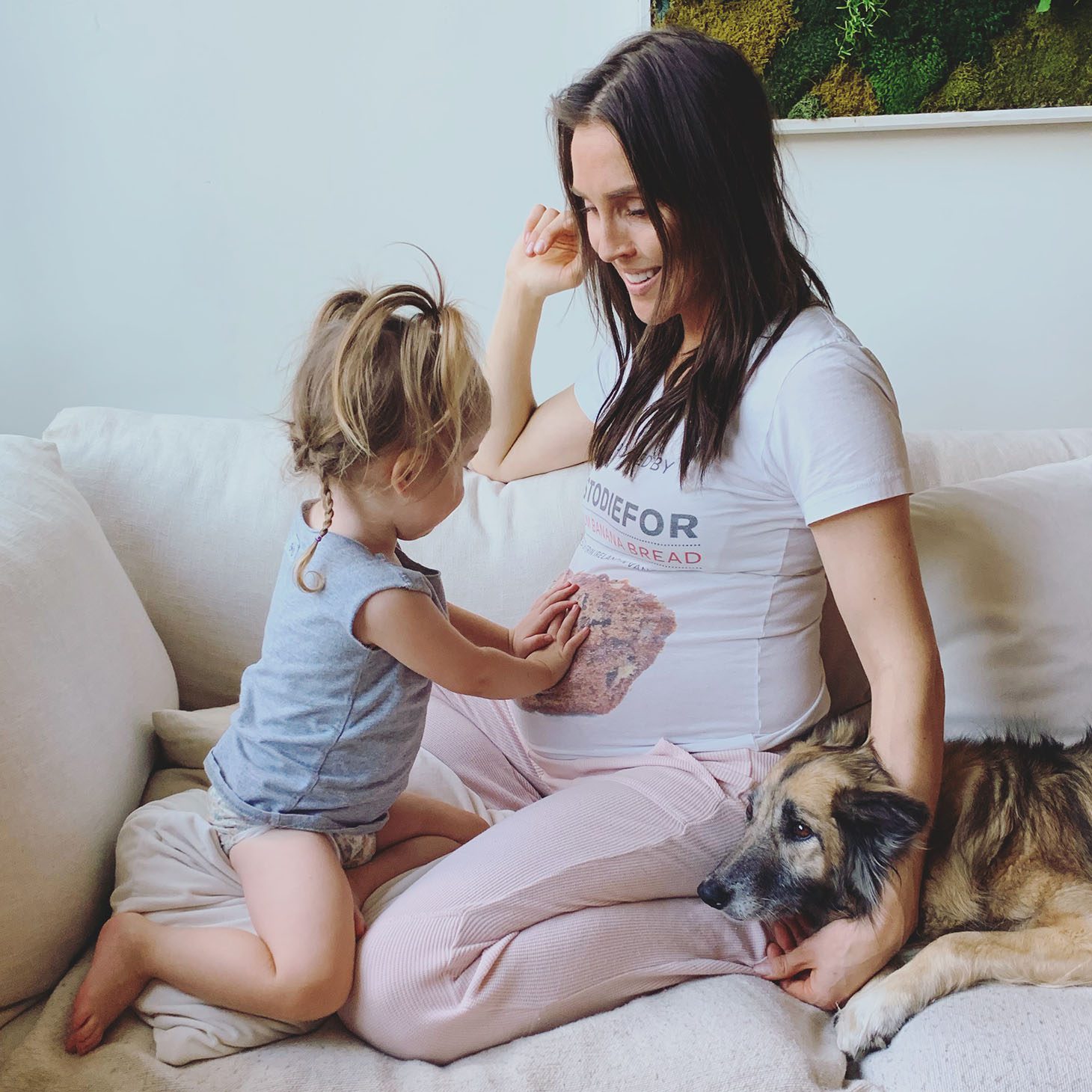
11. I don’t think I’ll be drinking milk anymore, but I’ve tried having soy milk and almond milk in my cereal, but I’m not too fond of the taste. Any suggestions?
I feel your pain. If you’re in Canada, too, you know that our options for plant milks are abundant … but whether they taste amazing is another question! I personally don’t mind most of them in smoothies and in cooking/baking, but if I’m wanting to drink a glass of plant milk, I’d have to make my own. Flavour-wise, it’s incomparable. It makes the boxed stuff taste like water. Here’s my favourite recipe for homemade almond milk (or sub in any nut except cashews which I don’t love because you can’t strain cashew milk — it ends up quite thick and grainy). As for where to get nuts, the cheapest I’ve found are from Bulk Barn, but I hear Costco online has some good options, too. If I had to pick the best tasting mass-produced plant milk on the market, I’d say Califia.
12. The information (that male chicks are ground up at a day old) actually isn’t true, not in Canada at least. When male chicks are born in the egg industry, they are actually raised as broiler chickens for meat, typically until 1-2 months of age. And they are definitely, DEFINITELY, not “ground up alive in a macerator”, they are taken to the slaughterhouse where they are usually stunned unconscious before being euthanized.
Unfortunately, it is true that day-old male chicks are ground up alive here in Canada and here’s proof from the Canadian government’s website:
Chicks destroyed – Egg production and Broiler stock
These are chicks which are purposely destroyed because there is no market for them, either because of their sex, or because the demand has been over-estimated. Read more government data on chick ‘culling’ here.
From CBC
Using a macerator to euthanize chicks is an accepted industry practice and considered humane according to industry guidelines. The guidelines were written by a group that includes industry, researchers and government. Full article here.
Lastly, male chicks born into the egg industry couldn’t be used as broiler chickens for meat because they’re a different breed. Egg laying hens are bred to lay a huge amount of eggs, approximately 340 each year. They are quite scrawny. Broiler chickens, on the other hand, are bred to grow large chests very quickly to meet the consumer demand for chicken breasts. Canadian researchers showed that, since the 1950s, broiler growth has increased by over 400%. The researchers noted that this causes physical and immune problems, and problems with the parents: the broiler mothers that need to be kept alive until reproductive age have to be starved, otherwise their enormous size would kill them. The bottom line is terrible things are happening to animals when it is convenient or profitable for the industry to do them.
13. I think one important thing to note in regards to farming is that regulations in Canada are much different than those in the U.S. Animals are treated differently here because there are more smaller, family-run farms in Canada, and much more strict regulations for the animal’s care and for the product that consumers get. Bottom line – always good to do research first!! Many vegan posts I read are from Americans and having grown up on a farm in Canada, I know things are a lot different here and cannot be applied across the board.
For this one, I asked my friend and lawyer Anna Pippus to weigh in. She has written a legal textbook chapter on farmed animal welfare law in Canada and is considered a leading expert in this area. She says…
Farms in Canada are actually quite large. For example, according to the federal government, in 2017 the average flock size on Canadian egg farms was 23,225 hens, and some are more than 400,000. Canadian chicken meat farms on average produced 421,628 kilograms of eviscerated meat—considering that each chicken weighs less than 2 kg, that means the average Canadian chicken producer farms hundreds of thousands of chickens each year.
Being run by a family is no guarantee that animals will be treated well on a farm. For example, Maple Lodge Farms is a family-run Canadian company that uses its family story on its website and labels. But Maple Lodge Farms has been fined 30 times for separate transport violations. A few years ago a court had to order them to pay $1 million to upgrade their equipment because they keep breaking the law. Maybe worst of all, footage broadcast by Canadian newsmagazine W5 showed horrible animal suffering at Maple Lodge, including chickens with broken bones sticking out of their skin and being left outside until they froze to death. The truth is “family farm” is a meaningless term.
There are federal laws that are supposed to protect farmed animal welfare in transport and at slaughter, which is how Maple Lodge Farms was fined. But even these laws are frequently unenforced—in fact, the government specifically allows companies a margin of error of up to 5 percent for some things, meaning companies are explicitly allowed to violate these animal welfare laws.
When it comes to animal welfare on the farms themselves, many people are surprised to learn that there are actually no real laws and no government oversight. Instead, the industry is self-regulated, using codes of practice that it develops for itself. It is no surprise that these codes of practice mostly benefit the industry and the enforcement of these guidelines is toothless.
You can learn more on this topic via this Paw & Order podcast featuring Anna.
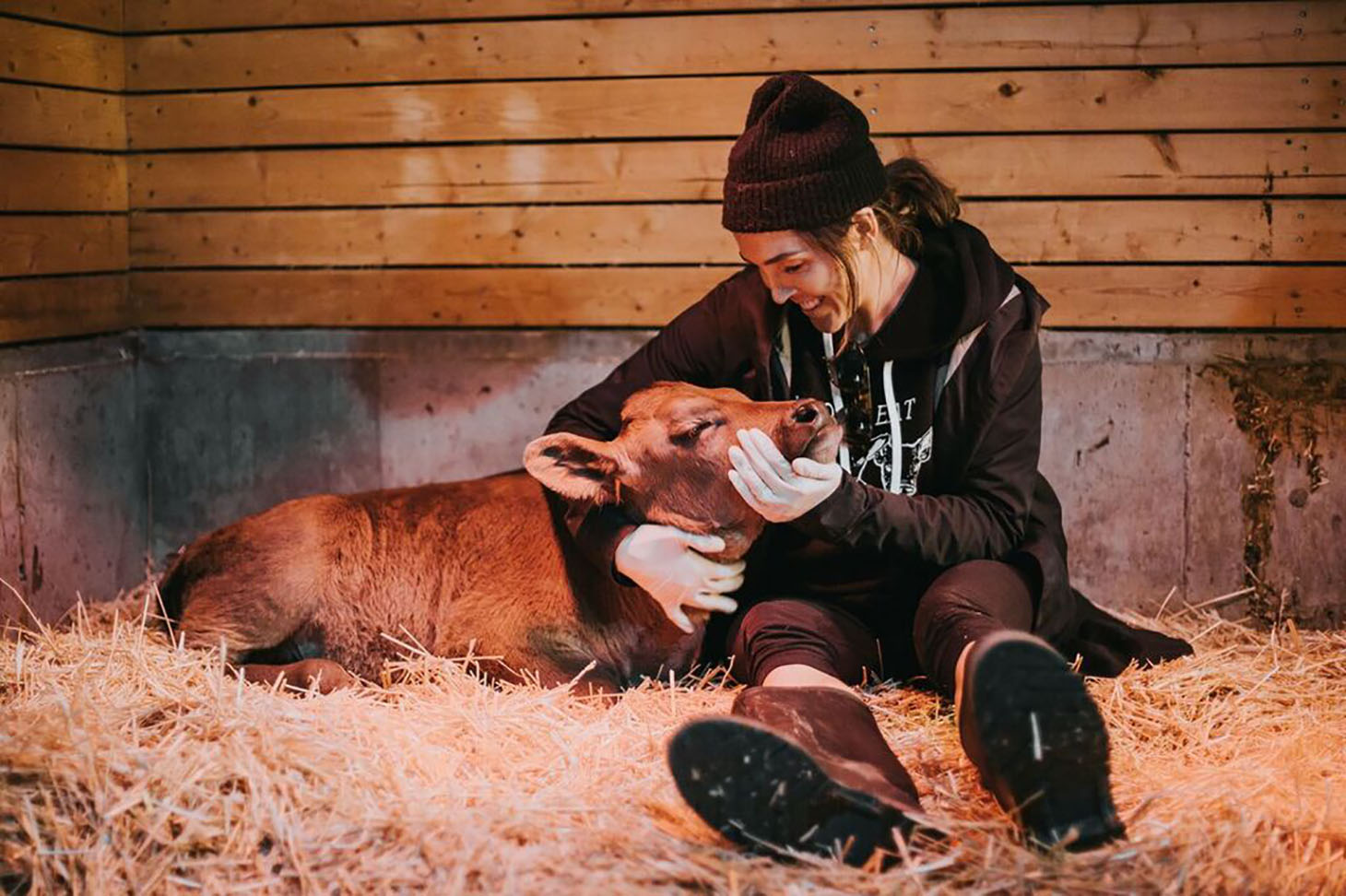
Thank you SO much, Erin, for sharing your wealth of knowledge and favourite books and recipes with us! I hope Erin was able to answer all of your questions … but if you still have some burning questions, feel free to share them below!
xo
Jilly & Erin

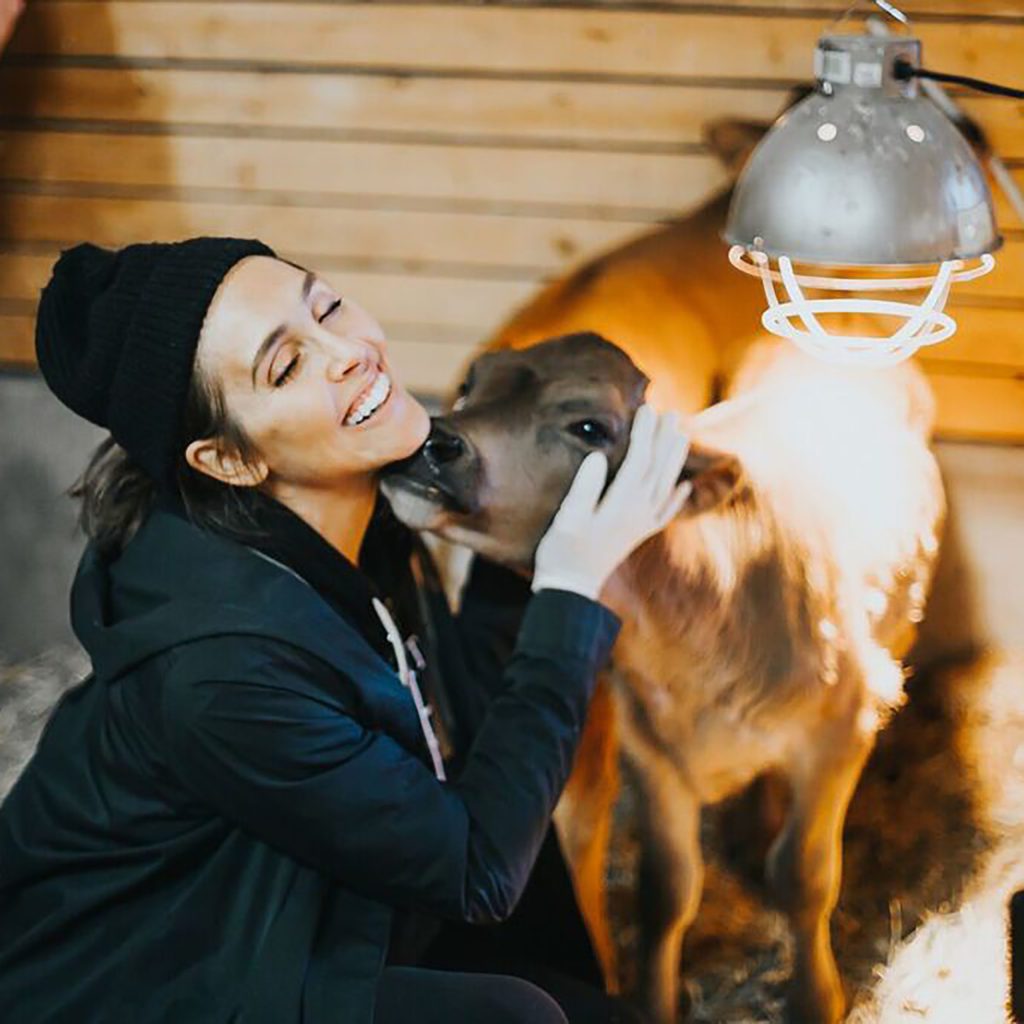



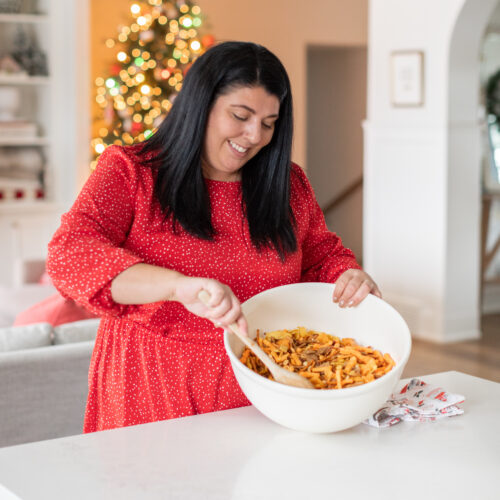
This was very informative. Thank you Team Jilly for letting Erin answer these juicy questions from readers. And thank you Erin for always speaking up for animals! Love following you on instagram 🙂
I love that you’re not afraid to be political about this, Jillian. I’m not vegan yet but you inspire me every single day to consume less animal products
I was advised by my oncologist to avoid soy products because of having had breast cancer. So while some doctors advise that it is safe, I will follow the oncologists advice
Great post! I have always wondered your thoughts on seafood/shelfisb.
Great post! What are your thoughts on seafood and shelfish?
I love this! I also look up to Erin, I listened to her on the plant proof podcast a couple of weeks ago and it was very inspiring. Thanks Jillian for spreading awareness and love <3
Great article! Can you add a way to Share?
Great post! Thank you Jillian & Erin for all of the science-based info. We have been vegetarian/vegan-leaning for almost two years and it can be challenging having to defend our choices when others are concerned that we aren’t getting enough protein, iron, etc. I appreciate all the factual information that we can pass along to them and assure them that we are doing ok. 🙂
Jill I love your content so much but this post is so dissapointing. This is a two sided discussion that unfortunately only includes one party. Please have an agricultural expert, or someone who is well versed in the field. I appreciate Erin’s opinion and believe that everyone should eat whatever they wish, but misconceptions of our agricultural industry is not something I stand for. Up and coming innovations such as sexing male and female chicks before they are hatched will revolutionize the culling issue in the broiler industry! Canadian dairy farmers undergo inspections including the health and welfare of their animals often through the pro action initiative, it is not self regulated! Also, broilers are an all in all out industry, meaning that farmers may produce a lot of meat, but that doesn’t necessarily mean they aren’t from a small family farm. There are so many misconceptions within this article and it’s upsetting to me that you don’t have any animal/agricultural experts to counteract. Canadian farmers do their best to take care of their animals 24/7 and yes, there will be some bad apples, but that happens in every career unfortunately.
Touching on the B12 question, as a vegan or someone mostly plant based, do you take other supplements/vitamins?
Not hear to judge, just educate. I feel like it’s my responsibility as a dairy farmers daughter.
In regards to question five. Newborn calves are removed from their mother within 24 hours for the safety of both animals. The mother needs proper care to recover after she calves and is milked for the first time after calving, That first milk called colostrum is feed to the newborn because calves are born without an ammune system and it’s very important that they have that milk within the first 12 hours of being born. The farmer can guarantee that the baby is getting what it needs when it needs it. The calf is also removed from the same pen to ensure that it doesn’t get layed on. Plus, some mothers aren’t just good mothers. They don’t lick their calf clean and don’t want anything to do with it. That’s where a farmer steps in. If you every want to educate yourself or ask more questions please reach out or look into the following: Farmer Tim (he’s Canadian), Modern-Day Farm Chick, The Farmers Wife or Dairy Carrie.
Thanks for listening!!
I can see the author is passionate about a vegan lifestyle, but in promoting veganism for all there is the assumption that everyone has the privilege of choice.
In underdeveloped countries where large populations of people are ‘vegan’ it is because they simply cannot afford meat, and they are often times severally undernourished. It would be wrong to romanticize or mislabel that the reason their diets are primarily plant-based is because of altruism.
Being a vegan in Canada is also not equal across the board. Being vegan in Vancouver or Toronto versus any northern community is arguably easier and less expensive. They have the privilege of choice in those large cities.
Being opposed to large-scale industrialization of the food industry is one way to maybe reframe these conversations, but that too requires we check our privilege because it costs more to buy the chicken raised down the road then the one cool-chilled in the grocery store.
It’s also a double-edged sword for the argument of plant-based diets, because that industrialization is what allows us to get fresh leafy produce in the middle of winter. Or almond milk. Or dragon fruit, in a part of the world that is not remotely tropical.
Food is a base socioeconomic yardstick, and that’s why it’s troubling when we start using it as a way to measure morals, or promote it as ‘medicine’.
For the question regarding plant milk: my absolute favourite milk/cream replace,ent for coffee is canned coconut milk(full fat or light). It is so creamy-good l could drink the whole can by itself, but it is pricey and high in fat so l only use it for coffee and deserts. My cereal milk is Natura unsweetened soy. Most people like their soy with a bit of cane sugar but l am so used to it that l prefer it unsweetened. Once you get used to it you will likely prefer it to dairy milk. I absolutely can not even drink a latte with dairy milk in place of soy anymore. My folks like almond and coconut milk better than soy, so l recommend trying them all and also try various brands of each type as they all vary in taste.
My daughter is also a picky eater. I try to change it, I try to make cooking and eating a family affair. Eat the foods you want your child to eat, that’s all 🙂 When introducing new foods to picky eaters, provide a small bite of the new food you want your child to try, followed up by a piece of food they love. In future meals, slowly increase the portion of the new food in each bite and decrease the portion of the “reward” food.
Want to safe my family’s health, therefore, your article is very helpful!
Thank you for that. Hope, my advise will help someone too 🙂
My daughter is also a picky eater. I try to change it, I try to make cooking and eating a family affair. Eat the foods you want your child to eat, that’s all 🙂 When introducing new foods to picky eaters, provide a small bite of the new food you want your child to try, followed up by a piece of food they love. In future meals, slowly increase the portion of the new food in each bite and decrease the portion of the “reward” food. Want to safe my family’s health, therefore, your article is very helpful! Thank you for that. Hope, my advise will help someone too 🙂